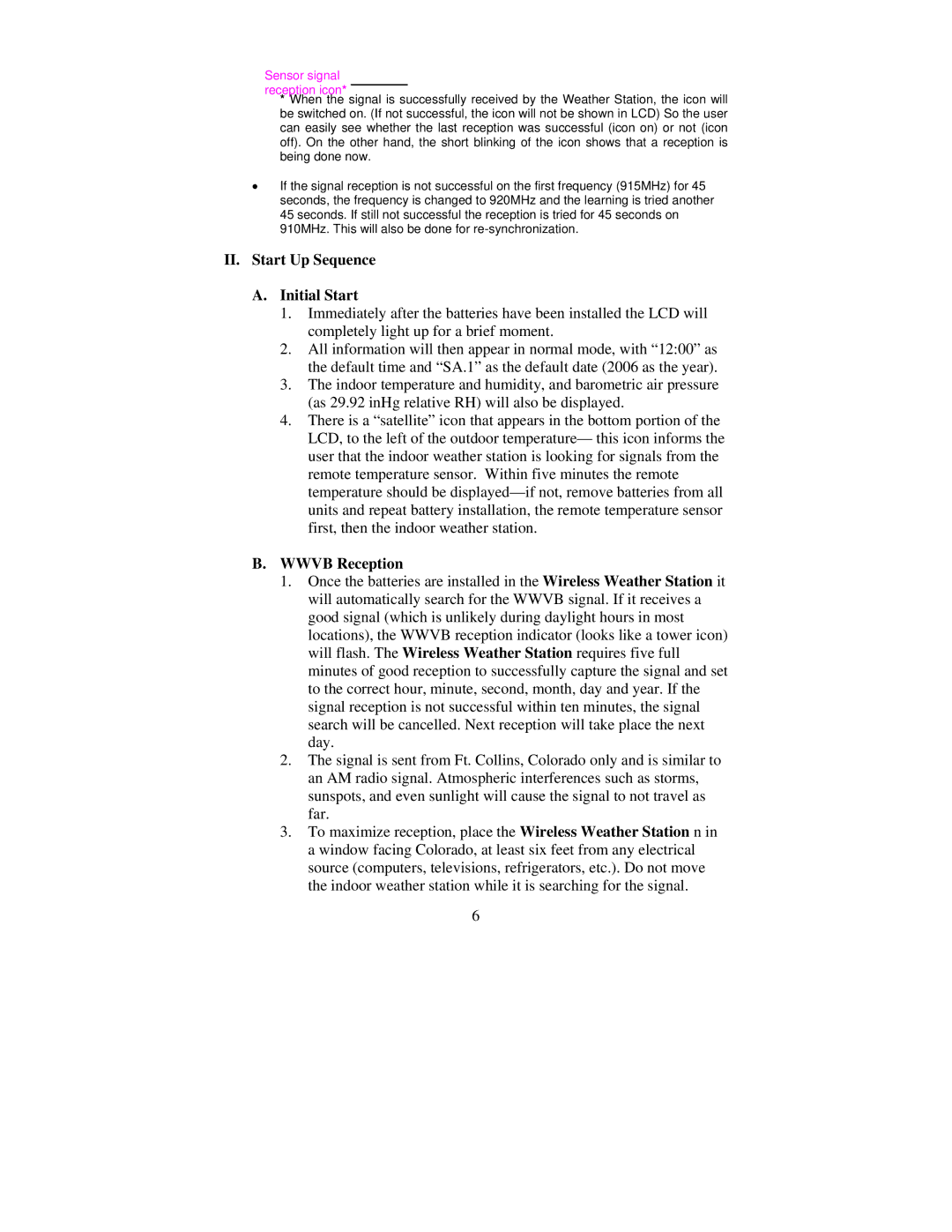Sensor signal reception icon*
* When the signal is successfully received by the Weather Station, the icon will be switched on. (If not successful, the icon will not be shown in LCD) So the user can easily see whether the last reception was successful (icon on) or not (icon off). On the other hand, the short blinking of the icon shows that a reception is being done now.
• If the signal reception is not successful on the first frequency (915MHz) for 45 seconds, the frequency is changed to 920MHz and the learning is tried another 45 seconds. If still not successful the reception is tried for 45 seconds on 910MHz. This will also be done for
II. Start Up Sequence
A. Initial Start
1.Immediately after the batteries have been installed the LCD will completely light up for a brief moment.
2.All information will then appear in normal mode, with “12:00” as the default time and “SA.1” as the default date (2006 as the year).
3.The indoor temperature and humidity, and barometric air pressure (as 29.92 inHg relative RH) will also be displayed.
4.There is a “satellite” icon that appears in the bottom portion of the LCD, to the left of the outdoor temperature— this icon informs the user that the indoor weather station is looking for signals from the remote temperature sensor. Within five minutes the remote temperature should be
B.WWVB Reception
1.Once the batteries are installed in the Wireless Weather Station it will automatically search for the WWVB signal. If it receives a good signal (which is unlikely during daylight hours in most locations), the WWVB reception indicator (looks like a tower icon) will flash. The Wireless Weather Station requires five full minutes of good reception to successfully capture the signal and set to the correct hour, minute, second, month, day and year. If the signal reception is not successful within ten minutes, the signal search will be cancelled. Next reception will take place the next day.
2.The signal is sent from Ft. Collins, Colorado only and is similar to an AM radio signal. Atmospheric interferences such as storms, sunspots, and even sunlight will cause the signal to not travel as far.
3.To maximize reception, place the Wireless Weather Station n in a window facing Colorado, at least six feet from any electrical source (computers, televisions, refrigerators, etc.). Do not move the indoor weather station while it is searching for the signal.
6
